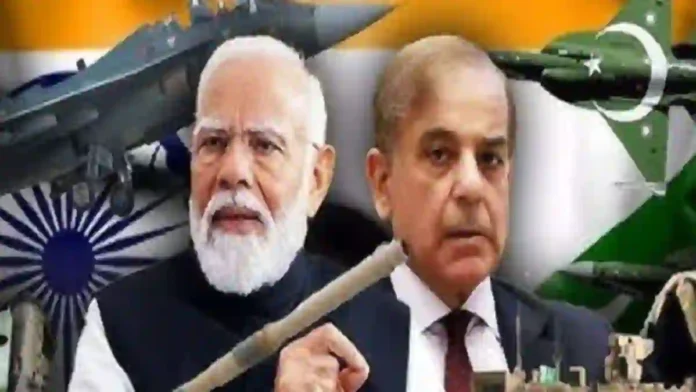India and Pakistan, despite ongoing concerns over nuclear escalation, are both actively preparing for potential future conflicts by replenishing their arsenals, seeking technological advantages, and deepening foreign defence partnerships, according to a report by Chinese publication SCMP.
The aftermath of the recent five-day aerial conflict in May 2025 has left both nations on heightened alert, with analysts warning that the region has entered a “dangerous new normal” where escalation could be triggered by even minor provocations.
India, following Operation Sindoor—a response to a deadly terrorist attack in Kashmir—has signalled that further punitive action is possible, maintaining a posture of readiness and deterrence. Prime Minister Narendra Modi has rejected what he calls Pakistan’s “nuclear blackmail,” emphasizing India’s resolve to respond to provocations without succumbing to nuclear threats.
Pakistan, meanwhile, has promoted its army chief to field marshal, framing its defence during the recent conflict as a success. Islamabad insists it is prepared for renewed clashes but warns that any escalation risks a nuclear stand-off. The US defence intelligence community notes that Pakistan continues to view India as an existential threat and is modernizing its military, including the development of battlefield nuclear weapons to offset India’s conventional superiority.
Read- After Operation Sindoor’s Grand Success, India, Russia Begin Talks On Advanced BrahMos Production
Both countries are turning to their principal foreign arms suppliers to replenish and upgrade their arsenals:
India is leveraging its strategic partnerships with the US and France to expedite the procurement of precision-guided munitions, advanced drones (such as the MQ-9B), and air-to-ground missiles for its Rafale fleet. France is reportedly able to deliver missiles from existing stockpiles within weeks, while the US is motivated to support India as a counterweight to China in South Asia.
Pakistan relies heavily on China for military hardware, including drones and munitions for its J-10C aircraft, but is expected to receive only limited batches due to Beijing’s caution about escalating regional tensions. Pakistan is also collaborating with Turkey to co-develop the Kaan fifth-generation fighter and is poised to become the first export customer for China’s J-35 stealth jet.
Both sides are expected to introduce new, previously unused technologies in future confrontations:
India is investing in indigenous projects such as the TEJAS MK-2 and the Advanced Medium Combat Aircraft (AMCA), though these programs are progressing slowly. To keep pace with Pakistan’s anticipated acquisition of the J-35, India may seek to accelerate procurement of fifth-generation fighters like the F-35 or Russian Su-57, though both options come with strategic and operational challenges.
Pakistan is likely to employ hybrid tactics, including the use of cheap, armed drones for border attacks and support for militants in Kashmir equipped with portable air-defence systems to counter Indian drones. This approach aims to offset India’s technological edge and exploit vulnerabilities in Indian defences.
Read- For India, China Main Adversary & Pakistan An Ancillary Niggle: US intel Report
Recent conflicts saw limited involvement of conventional ground and naval forces, but future crises could see expanded fronts and more aggressive targeting of air defence systems. Both nations maintain significant conventional capabilities, with India holding clear advantages in manpower, equipment, and budget. However, Pakistan’s pursuit of battlefield nuclear weapons and ambiguous nuclear posture are intended to deter large-scale Indian offensives.
The intensifying competition between China and the West is drawing India and Pakistan deeper into global strategic rivalries. The US is keen for India to focus on countering China, while China is careful not to alienate India, seeking to avoid a two-front confrontation. Both external powers are likely to calibrate their support to prevent outright war between the nuclear-armed neighbours.
The risk of inadvertent escalation remains high, with potential triggers including human error, cyber intrusions, or miscalculation during crises. The next conflict could involve advanced technologies such as AI-enabled systems, cyber sabotage of nuclear command chains, or even tactical nuclear use if escalation is not checked early. Both countries are expected to continue their arms build-up and technological modernization, ensuring that the rivalry remains entrenched and volatile in the years ahead.
India and Pakistan are preparing for the next conflict by replenishing arsenals, seeking technological superiority, and relying on foreign partnerships, all while managing the risks of nuclear escalation and external influence in a region where the margin for error remains perilously thin.
Based On A SCMP Report
Agencies




